
When we think of the past, one of the first thoughts that runs through our mind is how people lived without electricity. Nowadays, we can’t even imagine a day without it because all of our appliances and devices run on electricity.
The truth is, however, that most homes don’t have enough power outlets to keep everything running and charged, so most of us rely on power strips without being aware that appliances that consume a lot of energy become dangerous fire hazards when we plug them into a power strip.
Although power strips are the thing to go to when it comes to charging your phone or power an entertainment setup, there are certain devices that should never be plugged into a power strip.
Air conditioners, space heaters, toasters, and other appliances that use high wattage can easily cause power strips to overheat, which can easily lead to a fire hazard.
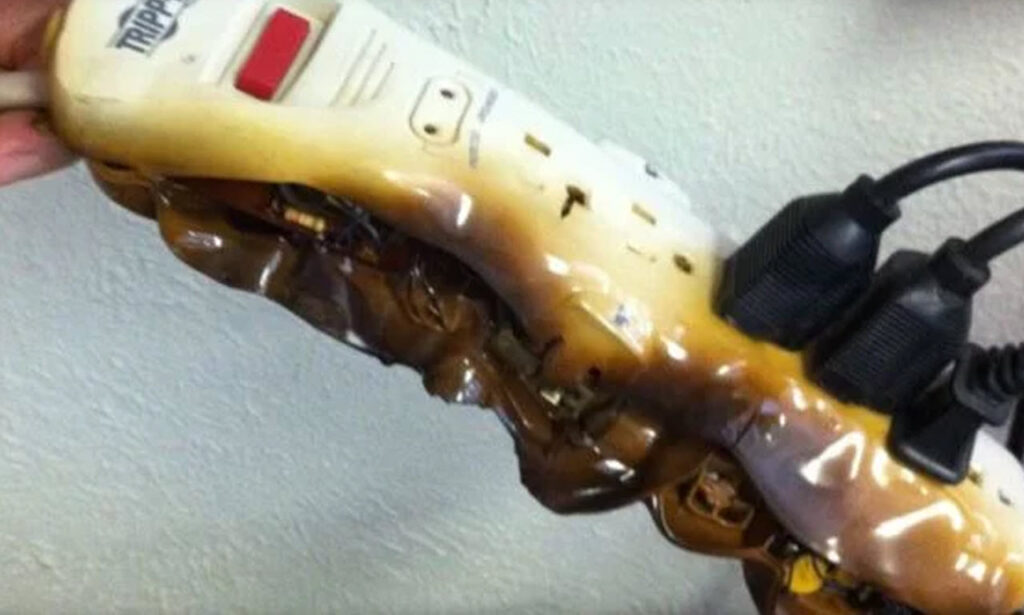
Even before plugging anything into a power strip consider the ammount of power they support. This is usually listed on the product itself.
High-capacity appliances need to draw a lot of power through an electrical circuit to work. Keep in mind that an appliance does not need to be large in size to draw large amounts of power.
Below is the list of appliances that should never be plugged into a power strip.
1. The oven: Even though the oven is not used continually, it is a power-hungry appliance that should not be plugged into a power strip. In fact, it should be plugged into its own wall outlet on its own circuit.
2. Refrigerator: Refrigerators require a lot of power and frequently cycle on and off which can easily overload a power strip and cause damage. Much like the oven, refrigerators require a wall outlet dedicated solely to powering the appliance.
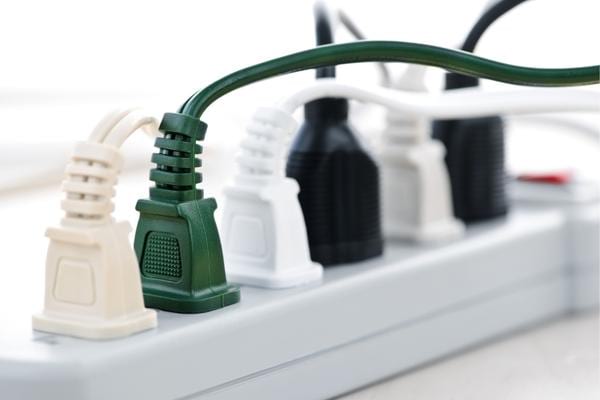
3. Washing Machine: When turned on, washing machines pull a lot of power. This is the main reason why these appliances shouldn’t share a receptacle with any other appliance or device.
Most washing machines use a max of up to 1400 watts, putting it dangerously close to the max load of most power strips. On top of that while working, washing machines are usually left unattended and work longer hours, at least an hour, which is long enough for a power strip to overheat.
4. Heating: Portable heaters should never be plugged into a power strip because most of them use 1,500 watts of energy on their high setting and they usually run for extended periods of time.
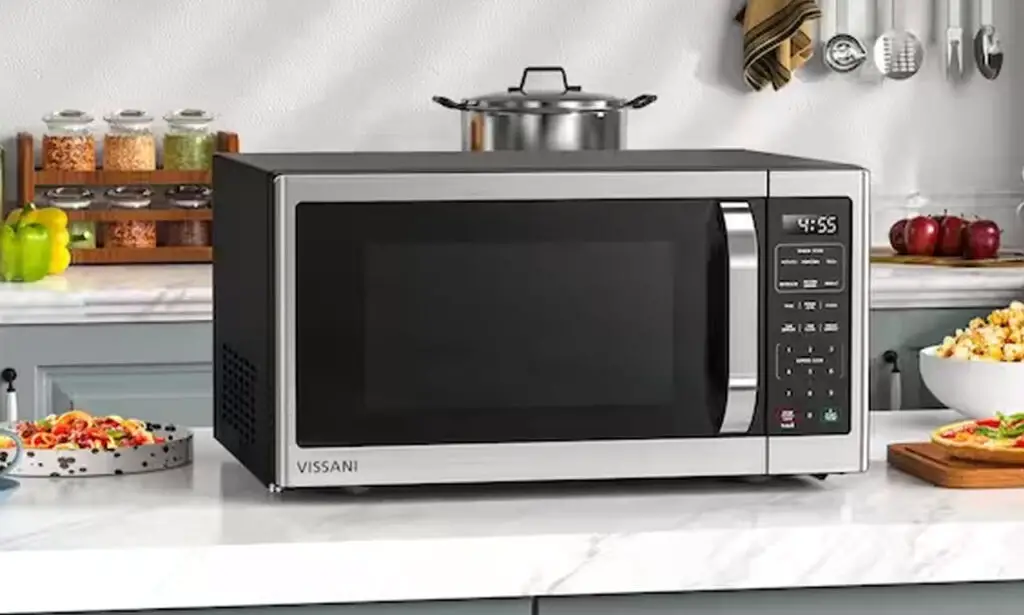
5. Microwave: Since they consume a lot of energy when used, most microwave ovens are plugged into their own receptacle and that is always a good practice.
6. Coffee Maker: Those who own a coffee maker are not fully aware of the power these appliances use, and this is why they should never be plugged into any sort of power strip or extension cord.
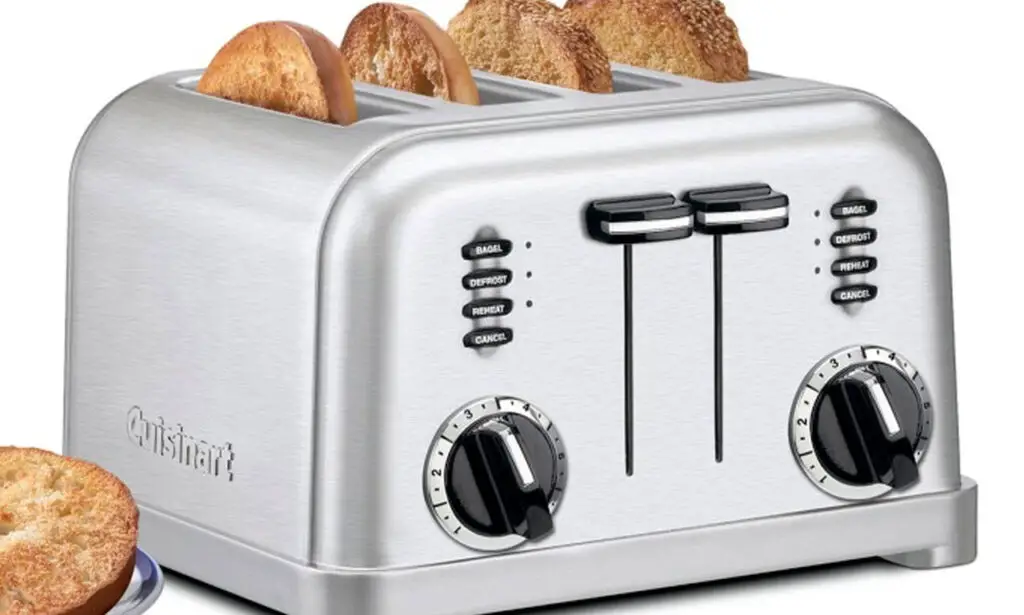
7. Toaster: You may think that browning up slices of bread or bagels doesn’t require a lot of energy, but the truth is that toasters use a lot of energy when in use and they should be plugged directly into the receptacle rather than a power strip.
8. Another Power Strip: Power strips are not meant to be used in conjunction with another power strip, although many people do exactly that. This, however, violates most safety codes because it can easily lead to overloading the electrical system.
9. Electronics (Computer, TV, Router): These types of electronic devices don’t necessarily use a lot of power on their own, but they are sensitive to surges and you can find yourself with a burnt out computer or TV very quickly if you plug them into a power strip.
If you want to protect these sensitive devices from power surges, opt for a power strip that functions as a surge protector.
How to Untangle Necklace Chains: A Simple Hack

Many of us struggle to keep our necklaces untangled, especially those of us who have small children at home. Allowing kids to play with our necklaces usually starts out innocently enough, but it soon spirals out of control into a tangled disaster. When it’s time to wear our favorite items, they frequently come up annoyingly knotted. But don’t worry—we have a simple fix that will spare you the trouble and effort!

Nobody wants to waste valuable time trying to untangle necklace chains. Each of us has more important things to do! Most of the time, we have a particular necklace in mind to go with our ensemble, so the last thing we need is to waste time tangle jewelry. This is where this nifty trick comes in handy.
You can easily disentangle any necklace chain with just a tiny bit of lubricant, two needles, and an opened safety pin. What’s the best thing, then? All of it is possible without having to leave your home! You will soon be able to wear your beloved necklaces again thanks to this simple and quick process.
This is how you do it:
1. Put a tiny bit of lubricant (cooking or baby oil) on the chain’s knotted section.
2. Gently pick apart the knots with two needles or an opened safety pin. Begin with the outside loops and proceed inside.
3. After the necklace begins to come loose, keep carefully pulling the knots apart until the chain comes free of all tangles.

This is definitely one of those hacks that we all love because it saves us money and time. It is not necessary to replace tangled jewelry with expensive pieces. You may prevent the frustration of having to untangle your necklaces every time you want to wear them by using this easy do-it-yourself technique to keep your necklaces in pristine form.
Make sure to tell your friends and family about this wonderful advice. They will be appreciative of it!


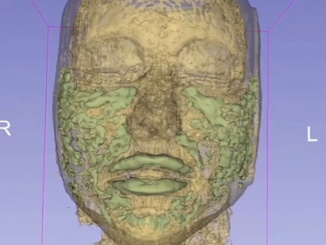
Leave a Reply